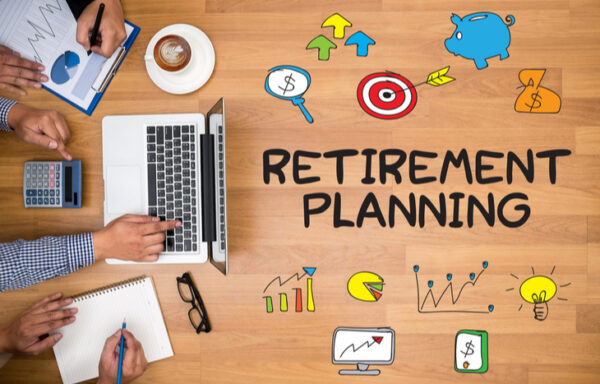Retirement: Don’t Make This Common but Very Costly Mistake!
Wednesday Wealth Recap
- Investors beat the market by buying stocks that outperform it. But that’s only part of the equation. Alexander Green explains how to sell at the right time too.
- A handful of companies are responsible for the world’s stock market gains. Nicholas Vardy shares how to ride the trend higher… while it’s still on your side.
- Electric vehicles are getting more popular in the U.S. But can the power grid handle the new load? Energy and Infrastructure Strategist David Fessler has the answer.
I consider myself to be an expert of sorts on retirement. Not because I’ve studied the subject, but because I’ve retired three times.
Yes, I’m a three-time failure at retiring. But I’ve learned from my mistakes. Today, I’d like to tell you about the worst mistake retirees make.
It’s a common mistake… Yet I’ve never heard it mentioned by retirement experts. Nor have I read a word about it in retirement books…
The biggest mistake retired people make is giving up all their active income.
When I say active income, I mean the money you make through your labor or through a business you own. Passive income refers to the income you get from Social Security, a pension or a retirement account. You can increase your active income by working more. But the only way you can increase your passive income is by getting higher rates of return on your investments.
When you give up your active income, two bad things happen…
First, your connection to your active income is cut off. With every month that passes, it becomes more difficult to get it back.
Second, your ability to make smart investment decisions drops because of your dependence on passive income.
Retirement is a wonderful idea: Put a portion of your income into an investment account for 40 years and then withdraw from it for the rest of your life. Once you retire, you won’t have to work anymore. Instead, you will fill your days with fun activities: traveling, golfing, going to the movies, and visiting the kids and grandkids.
But consider this: A retirement lifestyle for two, like the one I described above, would cost about $100,000 per year.
How big of a retirement account do you need to fund that?
Let’s assume that you and your spouse can count on $25,000 a year from Social Security and another $25,000 from a pension plan (two big “ifs”).
To earn the $50,000 balance in the safest way possible (from a savings account), you’d need about $5 million, because savings accounts pay only 1% at most right now.
But middle-class American couples my age are trying to retire with an account in the $250,000 to $300,000 range. And that’s where the trouble begins. To achieve an annual return of $50,000 on $300,000, you’d need to make 17% per year.
Getting 17% consistently over, say, 20 years may not be impossible, but it’s very risky – too risky for my tastes.
I retired for the first time when I was 39. I put my money into AAA rated municipal bonds (very safe at that time), yielding between 5% and 6%. It didn’t take long to figure out the math: At that return on investment, I could not maintain the lifestyle I wanted. To get higher returns, I would have to put my money into riskier assets. I had an instinct – correct, I think, in retrospect – that would end badly.
So what did I do? I went back to work.
I went back to earning an active income because I didn’t want to spend my days trying to “beat” the market and my evenings worrying about how I was doing. And do you know what happened?
The moment I started earning money again, I started to feel better.
Retirement isn’t supposed to be a time of worrying about money. But when your income is entirely dependent on the return you’re getting on your investments, that is exactly what will happen.
As I write this, millions of Americans my age are quitting their jobs and selling their businesses. They are reading financial magazines and subscribing to investment newsletters. They are hoping to find a stock-selection system that will give them the 20% to 30% returns they need.
But they will find out that such systems don’t exist. They will have good months and bad years, and they will compensate for those bad years by taking on more risk. The situation will go from bad to worse.
It doesn’t have to be this way. Let’s go back to the example of the couple with the $300,000 retirement fund and the $100,000 per year retirement dream. If they each earned only $15,000 in active income and added that to their Social Security and pension, they would need a return of only about 7% on their retirement account, which is more doable.
I am not saying that you should give up on the idea of retirement. On the contrary, I’m saying that retirement might be more possible than you think.
But you must replace the old defective idea that retirement means living off passive income only. Paint a new mental picture of what retirement can be: a life free from financial worry that includes lots of travel, fun and leisure. Funded in part by active income from doing some sort of meaningful work.
The first benefit of including an active income in your retirement planning is that you will be able to generate more money when you need to.
But the other benefit – which is less obvious – is that it will allow you to make wiser investment decisions because you won’t be a slave to your investments.
There are dozens – no, hundreds – of ways for a retired person to earn a part-time active income. You can, for example…
- Earn $50 to $500 per hour working from home or the local coffee shop as a freelance copywriter.
- Make $30 to $100 per hour as a tutor. Or you could put your friends and family to work as tutors and make $500 to $1,000 per hour.
- Make $50 to $500 per hour running a home-based business that performs routine homeowner services such as lawn care, pool maintenance, tree trimming or carpet cleaning.
- Earn $50 to $100 per hour walking dogs and offering your clients other related services such as pet sitting, dog grooming and obedience training.
These are just a few examples. There are plenty more ways to add additional streams of active income… or complement your passive income in retirement.
About Mark Ford
Mark Morgan Ford is a lifelong practitioner of writing, teaching, entrepreneurship, martial arts and philanthropy. He has written more than two dozen books on business, entrepreneurship and wealth building (several of which were New York Times and Wall Street Journal bestsellers). As an entrepreneur, he has been involved in dozens of multimillion-dollar businesses, including one whose revenues exceeded $100 million and another that broke the billion-dollar mark. And as a real estate investor, he has been involved in more than a hundred projects and developments, from single-family homes to apartment buildings, office buildings and resort communities. He shares the lessons learned from his decades as an entrepreneur and investor with readers of Manward Digest.






